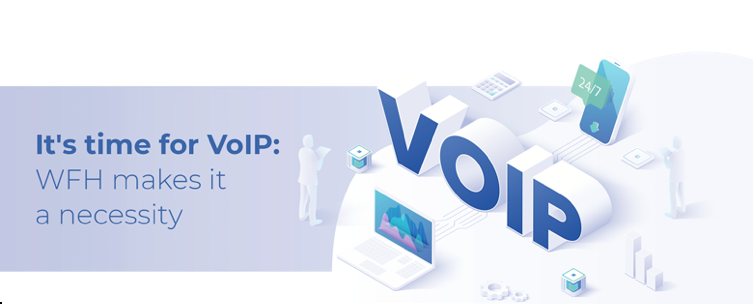In 2019, most people went into an office. Then Covid-19 forced everyone to stay home and work remotely. It’s not a temporary change. A year of lockdowns upended how, when, and where we work. Can your IT solutions support this new culture? Or will you fall behind on demands from clients, staff and business partners?
Work-From-Home is Here to Stay
For companies that had already been utilizing work-from-home (WFH) policies, they probably already had the tools and devices selected to make the transition from office to off-site thoroughly transparent. For those organizations that eschewed WFH, being forced into it overnight probably created a lot of dissonance, as workers struggled to find the ways to conduct their jobs using tools designed for office-based work.
No matter what your situation, it is past the time to start adopting technologies that facilitate remote work, because even as things “open up,” it is likely that even those who once looked askance at WFH will have discovered it is a productive and potentially money-saving approach to conducting business.
Businesses relying on old IT solutions will be left behind.
Right now, WFH isn't just an option and you need to be as agile and productive as possible. Old tools won't cut it. And don't view what you are doing to facilitate WFH today as just papering over a temporary problem. WFH will never go away. WFH may decrease, but it will probably never drop back to the levels prior to the start of the Covid crisis. And even as companies adopt only partial WFH, they may continue to move away from permanently assigned offices/cubicles and adopt “hotelling” style workplaces. Inherently, these will require VoIP technology to be functional.
Facilitate off-site collaboration and improve productivity with VoIP
It is time to abandon that on-site PBX and move ahead to internet-based voice communication and the array of new collaborative tools that accompany this communications model.
What is VoIP?
Voice over Internet Protocol (VoIP) takes us away from the traditional office PBX, the on-location physical equipment that provides voice telephony using physical wires or fiber to transmit analog signals. PBX technology allows for some audio conferencing (though it can be a bit clumsy to set up) as well as voicemail, call forwarding and some other call sorting features. However, a PBX has some serious limitations on available collaboration features and requires a trained technician to configure any changes. Even moving someone to a new office requires expensive labor to move the extension to a different physical location.
VoIP pulls us away from the physical limitations created by the PBX.
VoIP turns analog signals (basically your voice) into digital packets that can then be sent via the internet to any destination supported by broadband internet service. Once free to send digital signals via the Internet, a whole host of new collaboration tools suddenly become possible.
Your organization needs a good business continuity and disaster recovery plan and VoIP can improve your disaster recovery capacity. Due to VoIP’s flexibility, your business can still operate even if a physical location becomes inaccessible.
3 Ways VoIP is Better for Your Business Than a PBX
So what do you get with VoIP technology that you can’t get from a PBX phone system? Quite a bit, but basically the productivity advantages fall into 3 categories.
1. Mobility: Wherever a worker is, that is where their “phone” is
The idea of a handset physically wired into the wall goes away. This is the most straightforward of the advantages of VoIP. This means workers are no longer tied to the physical location of their office phone. You might ask, well can’t they just use their cell phone and forward their office line to that device? Of course, but that kind of sidesteps the issue. A cell phone is a bit of a standalone device, whereas the PBX and VoIP are platforms that provide more than bi-directional voice communications. The PBX phone system has voicemail, audio conferencing and other call sorting features that are lost when the employees shift to a mobile device. Also relying on employees' own mobile devices raises a lot of BYOD policy issues. With an employee owned device, there are data security issues, updates to be made and a variety of other policies that need to be addressed.
2. VOIP HAS More tools in one easy-to-use application
VoIP allows you to do a lot more with call forwarding and transfers, and it can be done from a simple application on your laptop or smartphone. It doesn't have to be done from the handset at your desk. Anyone can do it. What are some of the simpler things that can be done? A user can forward their calls to a mobile phone. And they can also set rules for forwarding. For instance, calls can be forwarded to voicemail after a certain time. Specific numbers can be forwarded to a mobile phone or to voicemail. More intriguingly, telephone messages can be transcribed to email or text message. The user can check voice messages via email. Voice communication is no longer restricted to a physical desk location.
3. You truly unify your communications
Once you’ve adopted the basic VoIP communications model, then you have access to a wide range of tools that permit users to transition from one mode of communication to another while remaining on one platform. As mentioned, voicemails can be translated into text, or emails into voice messages. More importantly, audio and video conferencing, and visual sharing can be incorporated into the communications model, so you no longer use separate platforms for the different communications media.
What can VoIP offer as a part of unified communications?
Here is a list of the main possible features.
-
Video conferencing
-
Screen sharing
-
Call control
-
SMS
-
Email
-
Voicemail
-
Internet telephony (VoIP)
-
Instant messaging
-
Screen sharing
-
Speech recognition
Remember, VoIP and Unified Communications are generic terms. Different vendors may offer different combinations of available services. But the point is, the rapidly evolving WFH and hotelling model is going to require adopting an entirely new communication model.
Your Managed Services Provider Can Implement and Manage WFH IT Solutions
A final thing to consider is how you will support the extended IT infrastructure as you roll out WFH activities. Traditionally, in-house IT staff, a managed service provider, or some combination of both would support your IT infrastructure. The PBX generally exists as a standalone entity, unrelated to the rest of your technology. Not only is it standalone as it functions in your work environment, very frequently it was sold, maintained and supported by a vendor that did nothing but provide telephony solutions. They would also be responsible for ordering and configuring the telco lines that went into the PBX. The PBX could be a very significant part of your operational structure, but it was segregated from the rest of your technology. This was true even in the call center business.
So, what’s the problem here?
The problem is that you have two very integral parts of your organization’s communication capabilities that really don’t have anything to do with one another. Tools such as video conferencing, email, chat, SMS are being used but they exist in parallel with your primary voice communication tool. Inherently, that creates a pretty clunky communications model. VoIP eliminates this wall and this helps you increase productivity and performance in three vital ways. In other words, this integrates voice communication with the entirety of your IT infrastructure.
VoIP is internet-based, so it suddenly is “just” another facet of the technology infrastructure.
Three Advantages to a Holistic Approach to Communications
1. VoIP Increases user productivity and satisfaction
Once you adopt VoIP and move towards a unified communications model, you increase user productivity. The movement from a voice call to an audio call or a chat can be “seamless”–not requiring moving from one platform to another. Also, it improves customer satisfaction. Your customers want to communicate with you on the channel that is most convenient at any one time. VoIP and unified communications can allow that to occur. Organizational success hinges heavily today on communication and collaboration. The more your employees and clients can interact on whichever communication tool is most convenient at any specific time, the more productive they can become.
2. Eliminate technology silos
VoIP eliminates the wall between your PBX voice technology and all of your other internet-based technology. The two can be more fully integrated and that means greater communication capacity. More importantly, it means your IT team has a 360-degree view of all of your communication technology as it becomes just one more part of your IT infrastructure. This improves transparency and helps integrate technology more completely into your business model.
3. You gain a strategic IT consultant
The move to WFH teaches us how important technology is to the survival and success of your business You cannot do without it. And with the constant changes and advances in technology, you need to be constantly looking forward to how technology can be used in new ways to improve productivity and revenues, and meet new, perhaps undiscovered, customer needs.
With the adoption of VoIP, all your technologies are under one roof and your IT support can become more strategic. But only if your managed service provider offers consulting and comprehensive IT management alongside VoIP services.
Look for a provider capable of managing all of your technology. Choose an expert who will bring strategic value to your business. When you work with an IT consultant, technology won’t be an afterthought. Instead it will form an integral part of the organization's present success and its planning for the future.
VoIP technology will enable your organization to maintain and improve productivity and collaboration no matter where your workers are stationed. Adopting VoIP makes it easier to integrate all of your technologies under one roof, meet the demands of WFH, and understand the role your IT and Managed Service Provider can play as a strategic partner.
We’re Here to Help With VoIP Technology Solutions – Wherever You’re Working
With VoIP installation and support from AGJ Systems & Networks, your business can enjoy all the benefits of modern communication techniques that are tailored to your needs for an affordable price.
Contact AGJ for a complimentary VoIP consultation. We will help you decide on a program that fits your growth goals and your budget.


